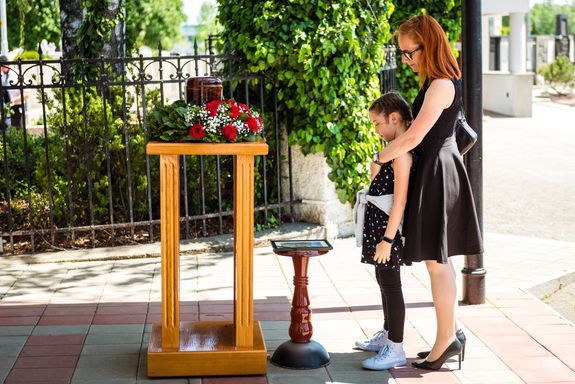The Rise of Direct Cremation
For thousands of years, human civilizations have used some form of cremation to honor those that have passed. Some of this was due to practicality as it’s easier to transport cremains than a body, and it can also be done without a labor-intensive burial.
There have long been ceremonial reasons for cremation, too. For some peoples, like the Norse, cremation freed the person’s soul or essence from their body, sending it to the afterlife unburdened.
Today, modern people have more grounded reasons for choosing cremation, but they’re choosing it all the same. According to the National Funeral Directors Association (NFDA), 1.56 million people were cremated for their final disposition. That number is expected to double by 2040.
Cremation is clearly becoming America’s preferred disposition option, but a particular type of cremation – direct cremation – is outpacing all other forms of disposition.
Cremation Has a Long History, But Direct Cremation is a Recent Concept
Cremation has been around in some form for thousands of years. As long as humans have honored their dead, they’ve been using fire to do it. However, direct cremation has only recently reached consumer awareness. That could have something to do with the name. After all, what makes direct cremation “direct,” compared to other forms of cremation?
The term comes from the fact that direct cremation services recover the decedent’s remains from the place of death and take them directly to the mortuary. Then, once cremation is approved by the state, the remains are taken directly to the crematory for disposition.
Unlike traditional cremation, there’s no memorial service or viewing included with direct cremation.
This may be another reason why direct cremation is just now reaching consumer awareness – because views on end-of-life arrangements are rooted deeply in tradition. However, direct cremations can be carried out in line with most religious and cultural traditions. Dignity in death can be fully preserved with direct cremation, in other words.
A dignified disposition is one reason why direct cremation is on the rise, but it’s far from the only reason.
Why Are More Families Choosing Direct Cremation?
Historically, funeral and memorial costs have risen much faster than all other consumer goods and services. Today, in Florida, a traditional funeral and burial costs about $8,000. A traditional funeral and cremation runs around $7,000. Note that it’s the funeral or memorial service that drives up the cost, and not disposition itself.
Direct cremation services remove the funeral or memorial from the process, and the associated financial burden placed on families. Instead, direct cremation includes only what’s needed. That means:
- Administrative costs and assistance with filing all cremation forms/paperwork.
- Transport from place of death to mortuary, and from mortuary to crematory
- Short-term refrigeration (usually a week)
- An alternative container for the decedent’s remains during cremation
- The crematory’s fee
There are additional goods and services that families can add to their direct cremation package, but the above is the necessary minimum. Depending on the direct cremation service, the total may come out to less than $1,000.
For many families, the
reduced cost of direct cremation isn’t just a financial relief. The money saved on funeral costs, embalming and burial can instead be used on a personalized memorial service at a later date.
Some Religions Are Now More Accepting of Cremation, As Are Americans In General
Direct cremation is also on the rise because cremation as a cultural practice is widely accepted by Americans now. This wasn’t always the case, but Americans and the religions they practice are softening. For example:
- Christianity – Cremation was once frowned on by most Christian denominations, but some have reversed course on the idea. The central cremation issue in Christianity is whether or not the practice interferes with resurrection. Both Protestantism and Catholicism no longer believe that it does. However, some denominations – including Greek and Russian Orthodox – still reject cremation as a form of disposition.
- Judaism – The story is similar with Judaism. While Orthodox Judaism is still opposed to cremation, reform Judaism is becoming more open-minded toward the practice. However, even in cemeteries dedicated to reform Judaism groups, the cremains will need to be buried to satisfy religious requirements.
- Islam – Islam remains opposed to cremation, and practitioners are barred from choosing it for disposition.
- Hinduism – Hinduism is on the opposite end of the cremation spectrum. Hinduism practitioners believe that the soul is bound to the body but seeks release following death. The best way to do this, according to the faith, is to cremate the body. For this reason, cremation is not only accepted, but encouraged as the proper form of disposition.
- Buddhism – Buddhism doesn’t prescribe guidelines for funerals or disposition, so followers are allowed to choose their end-of-life arrangement freely. Many decide to go with cremation, as this is how the great Siddhartha’s body was handled after death.
As you can see, most people in the U.S. aren’t restricted by their religion regarding cremation, though some of these developments are recent. This likely has something to do with why Americans are more open to cremation, and direct cremation, than ever before.
Families Are Also Spreading Out More, Which Fuels Direct Cremation Services
Direct cremation also fills a need that has emerged only recently. Families are spreading out into larger networks, some spanning thousands of miles. That distance can be a major impediment to traditional funeral services, which are time sensitive.
That impediment isn’t a concern for direct cremation because it can be arranged and carried out remotely. Of course, if loved ones prefer to be present, or are required to be present for religious reasons, this can also be arranged.
The point is, direct cremation ensures a loved one’s end-of-life arrangements will be managed in a dignified manner, even if no one can be physically present. And following cremation, the cremains can be picked up, delivered (withing a certain radius) or mailed, so the family can honor the deceased wherever and whenever they choose.
Direct Cremation Is On The Rise in America
Cremation just passed traditional funerals as the number one disposition choice for Americans, but its popularity is still spiking. According to industry projections, more than 80 percent of people will choose cremation by 2040.
Direct cremation is poised to grow along with that trend, as it provides many of the benefits of a traditional cremation, but with
added flexibility and at a fraction of the cost.





